In some ways, Dublin’s sprawling GAA community remains a village. Over 10 years have passed since a ripple of bright applause travelled along Griffith Avenue to mark Kevin Heffernan’s last journey through an area that, for him, held the potency of childhood magic. The chapters of Dublin football was easily identified in the clusters of men who stood together outside the Church of St Vincent de Paul that January day, and had formed Dublin teams of earlier decades. The 1970s gang, Heffernan’s original smart lads, were pall bearers. Ciaran Duff and the younger group from 1983 gravitated towards one another. Jim Gavin, just appointed Dublin football manager, was prominent among players from that generation.
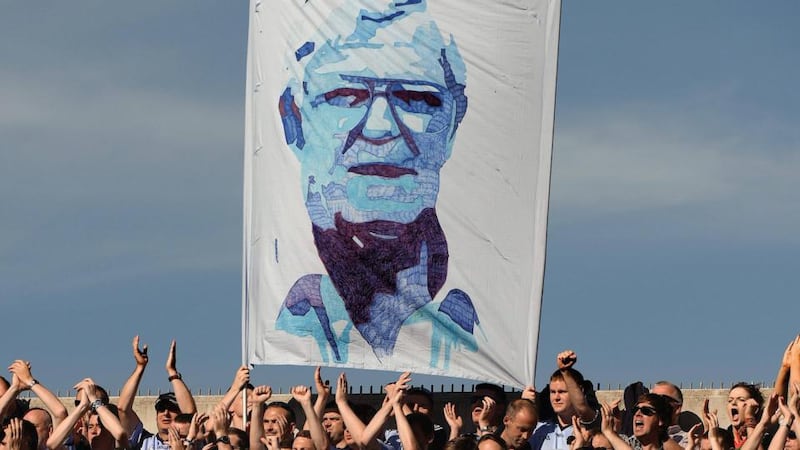
Despite all the words and film dedicated to Heffernan, he remains a mysterious force in that nobody could ever adequately answer the question of how the son of a garda from Offaly gave himself permission to bend and shape the lifeforce of the city game to his own vision and ambition.
Instead, they explained him through stories. Among the many unforgettable vignettes that helped explain Heffernan’s personality - driven, unreasonable, funny, caustic, generous, modest - was told by his great friend Jackie Gilroy, who had gone through a series of heavy operations in St James’s. Heffernan had visited Gilroy every single night for 10 weeks, usually ghosting in with a cup of coffee in his hands long after visiting hours were over. But on this occasion, he had made a morning visit and was sitting at the end of the bed when a surgeon breezed through, flipping the chart. Heffernan asked how his friend was doing.
“He’s doing wonderfully!” came the reply. “He’ll be out playing golf with you in a couple of months at this rate.”
RM Block
“You’re some surgeon,” Heffernan praised. “You have a great talent.”
“Thank you!” said the doctor.
“Because he couldn’t play f**king golf before he came in here.”
It wasn’t just the killer line or the evidence of a deathless friendship that makes the story memorable. It was the inherent defiance and loyalty. As Jackie Gilroy said in this newspaper: “He was at his height when I was at my worst.”

The same was true of Dublin football. Heffernan transformed a moribund urban tradition. David Hickey is the youngest player to be selected on a Dublin senior team, making his debut at 17. That was in 1969. He had to wait until 1974 before he won a championship match. Mick Hanley became a familiar voice to Dublin GAA followers through his years broadcasting with Anna Livia FM. His earliest memory of seeing a Dublin team win anything was an O’Byrne Cup final in 1969. “I’d say there were a hundred people at it. I would have listened to a lot of games in the car. My father was a GAA man and my mother won four camogie All-Irelands with Dublin. But my early impressions were down the country or at the beach and listening to the radio and Dublin not doing too well.”
Because he grew up in Marino, Hanley was one of the early devotees of the Dublin revival under Heffernan. In 1973, Dublin had managed 0-9 in losing to Louth in the Leinster quarter-final replay. A year later, they were All-Ireland champions. Over the summer of 1974, Dublin’s freewheeling team became a social movement, attracting a new fan base.
“Dublin was more soccer-orientated at that time,” says Hanley.
“It was strong on television and that. So, it was a non-GAA crowd coming along to the Hill. You have to go back to 1963, when there was 87,000 at the Dublin-Galway game, for comparable crowds. The Hill took off and it was brilliant. The wit was incredible. You got to know people - they might be your friends’ friends, but you would know them from the area. At times it wasn’t too safe. You could start at one step and end up 10 steps below. But it was fantastic and there are people still going to the Hill from that period.”
Breandán O’Connallain was on the Hill in 1974 and will be there on Sunday, too. His grandfather, William Conlon, was one of the founder members of Parnells GAA club, in 1893. In some ways, following Dublin has not changed.
“The crowd is one of the massive things. I don’t miss a game anywhere around the country. We all have our own spots on the Hill. There are different people from different clubs. When you see the old footage, you will hear fellas sings the songs they might sing at soccer matches. When Dublin started winning, they’d sing You’ll Never Walk Alone. That wouldn’t happen now; it’s all old Dublin songs.”
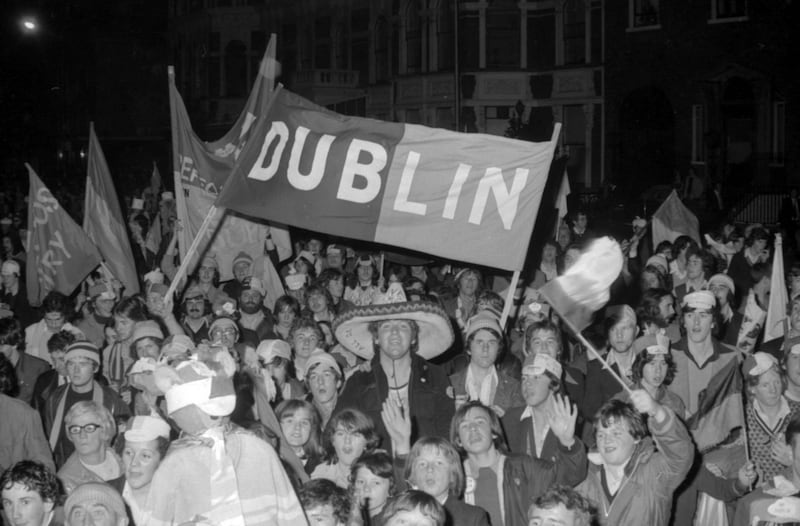
The archive film of those Dublin-Kerry games has become emblematic of the decade. But the real changes were happening in the suburbs. The composition of the team helped to pull Dublin’s necklace of villages closer together.
“If you look at the team of the 1970s - Stephen Rooney and George Wilson from O’Dwyers, Paddy Reilly from St Margarets, north county Dublin men,” says Hanley. “Seán Doherty - Ballyboden was not a big club at the time. Paddy Cullen was from O’Connell Boys. Anton [O’Toole] with Synge Street. And new clubs were formed: Naomh Mearnóg, St Marks, Trinity Gaels, Donaghmede, St Jude’s. All big clubs now.”
Those five years helped to colour the city sky blue and navy. It was not inevitable, as John Costello, the Dublin chief executive, explained when paying tribute to Heffernan’s totemic influence.
“The GAA was in danger of becoming a rural organisation. If there was no Kevin Heffernan in the 70s, there would have been no Dublin team in the 70s and there would have been no GAA in the city, it would become a rural game completely. There’s a scene in the film The Field where Richard Harris shows his passion for what the field meant to him. St Vincent’s and Dublin meant the very same to Kevin Heffernan.”
[ Culture Shock: Were there any justice, ‘The Field’ would never have been writtenOpens in new window ]
It’s a romantic sentiment but maintaining Heffernan’s urban vision was no easy task. In 1983, he guided his team to victory in a notoriously ill-tempered final against Galway played in torrential city weather - Dublin in a rainstorm. After that, the metropolis lost the knack for winning titles.
Worse, the GAA had come to see the city as a problem to be addressed. The feeling was the burgeoning population and spread of clubs were no longer governable; that it was unfair to expect Dublin to exist on the county-team status that gave teams such as Kerry, Tyrone and Mayo such a vibrant identity. The 2002 Strategic Review proposed the division of two county units, with the river Liffey acting as a boundary.
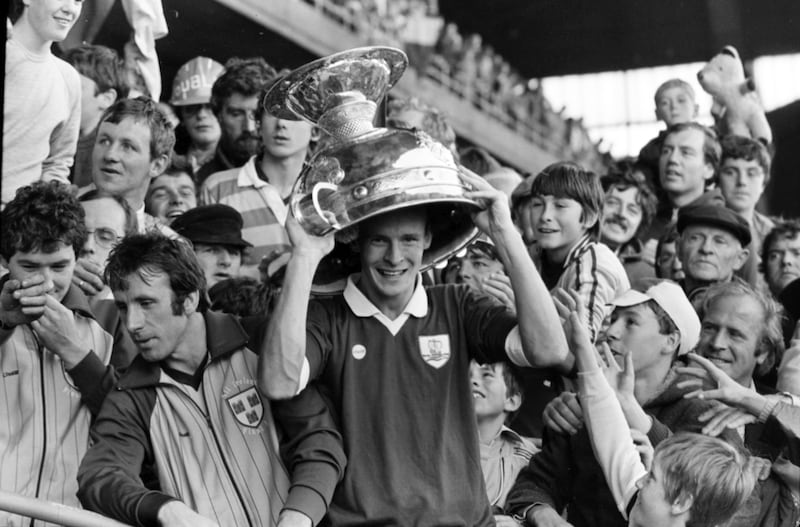
“We don’t want to override the Dublin county board, but Dublin isn’t just a Dublin problem,” said Peter Quinn, chair of the review committee.
“It accounts for 30 per cent of the State’s population and 25 per cent of the people living on this island. It can’t be considered the preserve of 90 clubs and one county executive. The county may want to vary the proposals, but we want progress in Dublin.”
The cold logic of the proposal was unimpeachable. But it flew in the face of what it meant to be a Dub. It was asking supporters to love half their city and county rather than all of it. It risked further accentuating the north-south divide. And it could theoretically lead to an all-Dublin All-Ireland final. In 2002, however, that seemed remote. That decade was defined by the antic energy and brilliance of Tyrone, whose robustly independent sense of self cast Dublin’s shortcomings in an unflattering light. By then, the city team was a big draw and had good players who could sell out Croke Park.
But the insinuation of a series of heartbreaks and humiliations was that city teams lacked substance. In changing that, Pat Gilroy took a leaf or two from Heffernan’s brutal pragmatism and insistence on moral and physical toughness. In addition, Costello emerged as a brilliantly organised and methodical chief executive officer.
The hollowing-out of Dublin’s inner-city goes far beyond Gaelic games. But the absence of a dynamic GAA scene along streets just a stone’s’ throw from Croke Park is an anomaly
Dublin’s dramatic 2011 All-Ireland win unleashed a memorable night of celebration in the city. And it coincided with the publication of Unleashing the Blue Wave: A Strategy for Dublin GAA 2011-17. It was a slick, emotive publication and laid out in clear terms the ambition of the Dublin County Committee of “positioning Dublin as the leading GAA county”. In doing so, it presented the unique challenges the county faced. The demographic time-bomb was chief among those, with the social challenges of offering those children the opportunity to play Gaelic games. The issue of volunteerism was paramount. By then, the GAA’s decision to heavily fund Dublin had begun to pay dividends. Between 2007 and 2020, Dublin GAA received €20 million in total coaching and development funding - some 39 per cent of the total funding to counties in the Republic. For random comparison, Galway’s allocation was €1,309,339 and Cavan received €985,034.
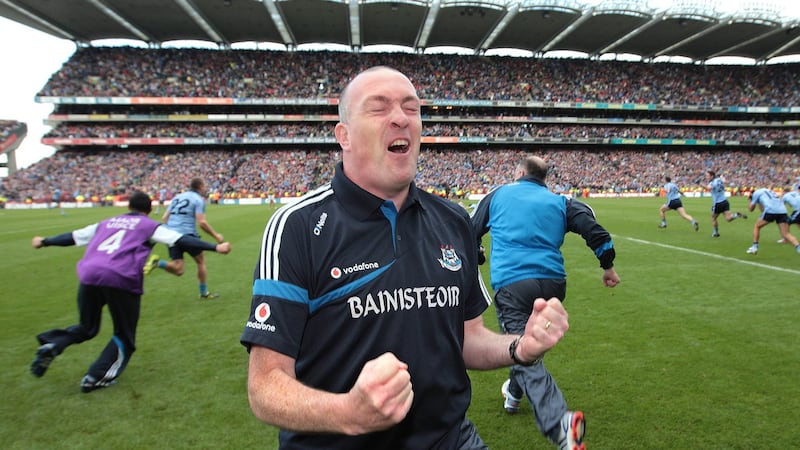
If anything, the combination of funding, a cohesive underage coaching structure at club and schools’ level and the freak emergence of unusually gifted football players in the same 10-year period was too successful. There has been national alarm as the Dublin senior team have made a wasteland of the once-vibrant Leinster championship. It was not their fault. They simply became good. They habitually pulverised opposition teams, too, until the latter stages of the All-Ireland championship. Mayo emerged as their chief adversaries as they swept to six in a row. Dublin have lost just four championship games since 2011, to Mayo (2012), Donegal (2014), Mayo again (2021) and Kerry (2022).
It is a record of frightening consistency and, for young Dublin fans, a dreamtime. To rival counties watching on, it seemed like the GAA had created a monster. In 2019, the funding issue was subject to a Prime Time investigative programme, drawing a sharp response from Costello in his annual report that December.
I can actually name you a dozen kids who have been before the courts or are dead that I saw playing football and saw real talent. And that talent became misdirected
— Christy Hallissey, club secretary of St Joseph's OCB
“Prime Time essentially used how the GAA funds a team of Games Promotion Officers to encourage, coach and support young children to play Gaelic games through their primary schools and GAA club nurseries in the most densely populated region in the country to raise questions with regard to the achievements of our senior football team. As they say, you’re entitled to your own opinion but not your own facts,” he said.
The Dublin senior club championship is extraordinarily difficult to win. The all-time honours roll paints a clear picture of how the power base has moved through the various enclaves. St Vincent’s remain out on their own with 29 titles, the most recent in 2017.
O’Toole’s and Geraldines are next on 11 and 10 championships respectively even though they have not won since the 1940s. After that, even big clubs such as Na Fianna, Ballyboden-St Enda’s and Ballymun are in single figures. Among the clubs on the honour roll are St Joseph’s, the East Wall club founded in 1918. They were Dublin champions in 1930. Now amalgamated with O’Connell Boys of North Wall, they are the only remaining GAA club in Dublin’s north inner city.
“In a sense, Dublin’s success in 2011 was detrimental to us,” says Declan Hallissey, the secretary of the merged club, St Joseph’s OCB.
“In that if they had continued to fail to win All-Irelands, as they had done from 1995, eventually they may have said: we have to draw players from neglected areas. The reality is that apart from Ger Brennan, whose father is strongly affiliated with this club, Dublin is exclusively made up of middle-class-based clubs. That’s fine too. But it means that Dublin could win six-in-a-row without having done any work in the inner city and the need to do so was off the agenda.”
The club is scarcely surviving, with one adult hurling and football team - a total of about 45 players. They are in division ten. Although Hallissey and others have tried to get juvenile teams going over the years, the challenges are difficult. The streets around St Joseph’s OCB, whose clubhouse in is Seville Place, have featured prominently after the recent alleged assault on an American tourist.
“Those who live in the area would say that it shouldn’t take a poor tourist to be a victim for this to be an issue because these characters are wandering around all the time,” he says.
Hallissey has had conversations with the Dublin county board about getting a juvenile GAA programme up and running. He knows there are plenty of conscientious parents who would commit to volunteering - and several from the area bring their youngsters to play in the established clubs.
“But to properly address the issues which come with under-privilege, you wouldn’t only need a couple of coaches, you would need a transport company, social workers. And the Dublin county board say that if we take the first steps, they will come in. I have no doubt you could get a dedicated group of people and do something. But the problem is you would burn out that group of people very quickly. We would need a systematic resource allocation and the GAA can’t deliver that.”
[ The GAA Club Conundrum: How to ensure no one is left behindOpens in new window ]
The hollowing-out of Dublin’s inner-city goes far beyond Gaelic games. But the absence of a dynamic GAA scene along streets just a stone’s throw from Croke Park is an anomaly. Hallissey pauses for a moment when asked if he knows of kids from in and around St Joseph’s who could have worn the Dublin shirt in different circumstances.
“Well, it is very emotive for me. I can actually name you a dozen who have been before the courts or are dead that I saw playing football and saw real talent. And that talent became misdirected. You could see the moment when they stopped coming to training and whatever bits and bobs you were doing with them and made the decision that there were more attractive alternatives out there. Usually at the age of 12 or 13.”
The 80,000 fans bound for Croke Park on Sunday will pass through the heartland of St Joseph’s OCB. But it’s hard for Hallissey to see what kind of impact Dublin’s decade of success has had. The kids can see it. But are they part of it?
Hallissey is a true Dub but laughs when he confesses, he can’t really lose tomorrow. Both his parents are from south Kerry. That’s the way it goes.
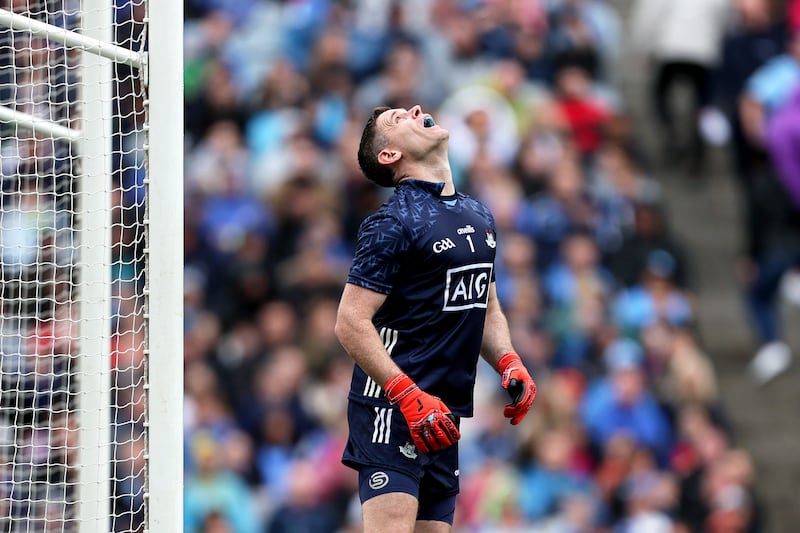
Regardless of the result in the final, it is clear that the showpiece team of Dublin GAA is about to enter a new phase. Stephen Cluxton, the goalkeeper who left and returned without explanation or elaboration, is now 41 years old. It has become clear, too, that of all the gilded players who have worn the blue shirt over the past 20 years, James McCarthy is destined to be remembered as the true indispensable of the bunch. The Ballymun man started off as a cantering, free-spirited wing back in 2011 and over those successive golden summers his influence and football intelligence deepened and deepened.
McCarthy’s father, John, was one of Heffernan’s boys. In 1989, Magill magazine took the visionary decision to dedicate an entire edition to the Dublin team of the 1970s. David Walsh’s piece was laid out in the shape of interviews with each of the 15 players and with Heffernan. McCarthy assured him he’d need no more than 15 minutes to hear his story.
Walsh wrote that they chatted for nine hours and that the interview was “the most honest, the most entertaining of all“. He admitted that Heffernan’s ruses and prematch motivations “almost cracked me”. And he spoke of his formative GAA experience, walking down Cappagh Road in Finglas West with his kit bag and always passing it off when the lads on the street would ask him if he was “still playing the gah”.
[ All challenges are different for GAA clubs - in Na Fianna, we crave spaceOpens in new window ]
A Dublin football player was nothing to be then. The Magill piece was a memorable piece in the creation of a side that has slowly been recreated as myth. James McCarthy was born in 1990, a year after it was published. The colours of Kerry and Dublin clashing, mingling, has become part of the GAA’s high art. Even Heffernan might have marvelled at what has taken place over the past decade - and wonder where it goes from here.
“The city is changing,” says O’Connallain.
“It’s not just people coming in from the country, its people from outside the country who are coming to live here. And these are challenges for all clubs in the city. And it’s a big challenge for the GAA to keep this going. It doesn’t matter who wins. The effect of this has to drift all over the city to keep it going.”




















